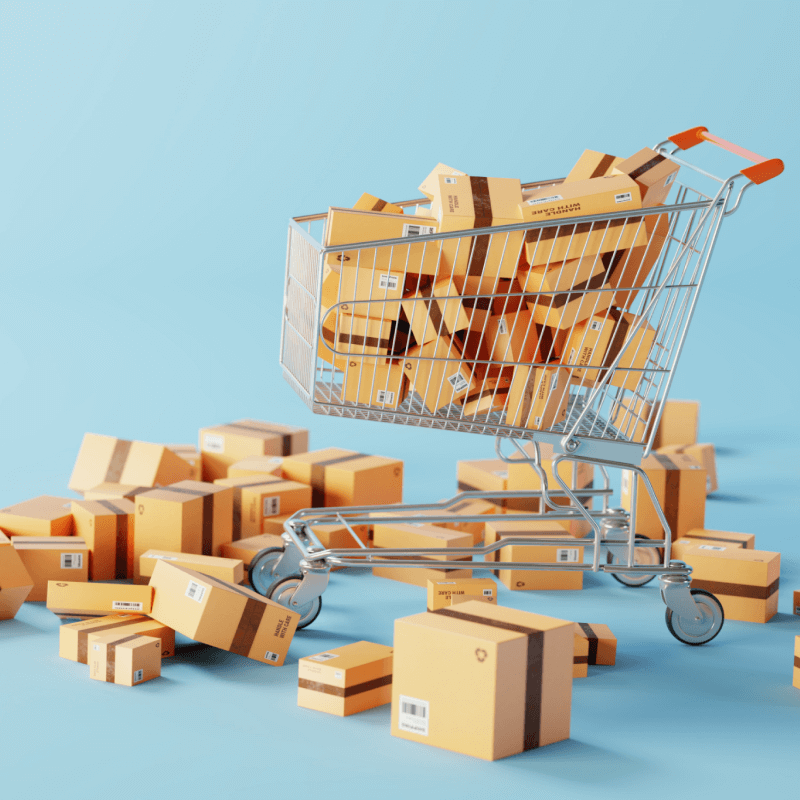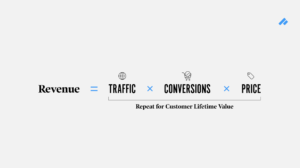Search Sessions – How to Increase Sales & Control Your Brand on Amazon

E-commerce has been steadily growing with the popularity of online marketplaces like Amazon. As COVID-19 pushed consumer buying online, it accelerated the need for businesses to sell their products online faster than ever before. Pattern’s Chief Revenue Officer John LeBaron and Gray Falkon’s CEO Trajan Bayley walked us through how to increase sales and regain control of your business brand on marketplaces like Amazon.
Watch the broadcast here, or read on for some of the key takeaways.
The e-commerce industry is booming and growing faster than previously targeted due to COVID-19. This has opened a new opportunity for businesses to sell their products online. There has been an increase in new sellers rushing to fit the demand. 60% of sales on Amazon are sold by third-party retailers. In order to get profitable growth in a marketplace, it’s imperative that you take control of and protect your brand on marketplaces sites like Amazon. Here are the 6 steps to protect your brand:
1. Get familiar with Amazon’s policy
Research the rules of Amazon and read the comments from other sellers. Marketplaces like Amazon have extensive sets of rules in place for both the buyers and the sellers. Knowing these policies is the first step in protecting your brand and your products.
2. Know your Amazon footprint
Keep an eye on the marketplace. Understand the different tactics sellers are using. If someone is misrepresenting your brand it can tarnish your reputation. Maintain your brand integrity. You need to know what kind of experience the users are having with the sellers that are selling your products. Know the different ways your products are listed, bundled, and described on Amazon.
3. Understand seller profiles
Know what your sellers look like and the brand they carry. Track the behavior of the seller. Find out if they are consistent or sporadic sellers.
4. Engage sellers
Reach out to sellers. Inform them you’re aware they are selling your products. It’s great if they are complying with Amazon’s rules. If not, let them know if they are violating policies and cite specific Amazon violations to them. Consistently follow up with the sellers.
5. Engage Amazon
Follow through with Amazon on any violations. Be defensive and proactive in monitoring and protecting your brand. Use brand registry for intellectual property complaints and for escalation. Be specific in communicating the violations to Amazon. Make sure your focus is on the consumer and the consumer experience. Amazon will decide what action(s) to take. If there’s no action from Amazon and the seller continues to violate policies, resubmit to them.
6. Never relent
It can take as little as 2 months for the problem to surge back. Sellers are always in motion. Be defensive and proactive in protecting your brand from fraudulent accounts. Acting quickly can make all the difference. Doing the work for your brand is worth it. When you are proactive at fixing the problems that come up you start to take control of your brand and pricing.
Once you have control, it’s important to focus on growth. Revenue = Traffic x Conversions x Price. You want to repeat this equation for customer lifetime value.

Think of ways to increase traffic. A great way to do that is by boosting traffic through SEO. Know what you need to rank on and try to improve your ranking in those areas. There’s SEO specific to these marketplaces. Amazon is one of Google’s biggest competitors. People don’t always search on Google for a product, consumers will go straight to Amazon. Focus on your traffic and how to get traffic to the listing. Represent your brand so people trust it’s your company selling your products. You add better traffic with better conversions. Take your marketplace as seriously as your brick and mortar business.
Ranking on Amazon
Amazon’s search engine is tailored to help sell products so the search engine they’ve created serves that purpose more than a traditional search engine with different search queries and search intent. Because of this, there are different weights for common SEO and KPIs but a lot are still similar.
Past Sales Velocity (Selling History)
A high sales velocity is immensely beneficial for you and for Amazon. “Amazon Best Sales Rank” or “BSR” is a score that they assign specific products based on historical sales data. The better the score the better rank you have.
Fulfillment Capabilities
If your product sales go up then your popularity metric, reviews, and BSR will hopefully increase. These are all direct influencers on your ranking. “Fulfillment capability” is included on this list as an indirect element that moves the needle.
Text Match Relevance
You want to be descriptive, accurate, and specific with your listings on Amazon. Use high-quality keywords in your titles and descriptions. If you can describe your product with something like ‘organic’, ‘heavy-duty’, ‘easy-to-use’, and so on then use those keywords. Answer common questions or concerns you hear related to your product.
Likeliness of Purchasing
Use elements that will inspire trust and increase conversions like product pictures, demo videos, and FAQs. These should all be backed by good reviews and good responses for negative reviews. Reviews and reputation management can help you fine tune your descriptions and listings.
For all future shows be sure to sign up right here and check out all our other amazing content!

